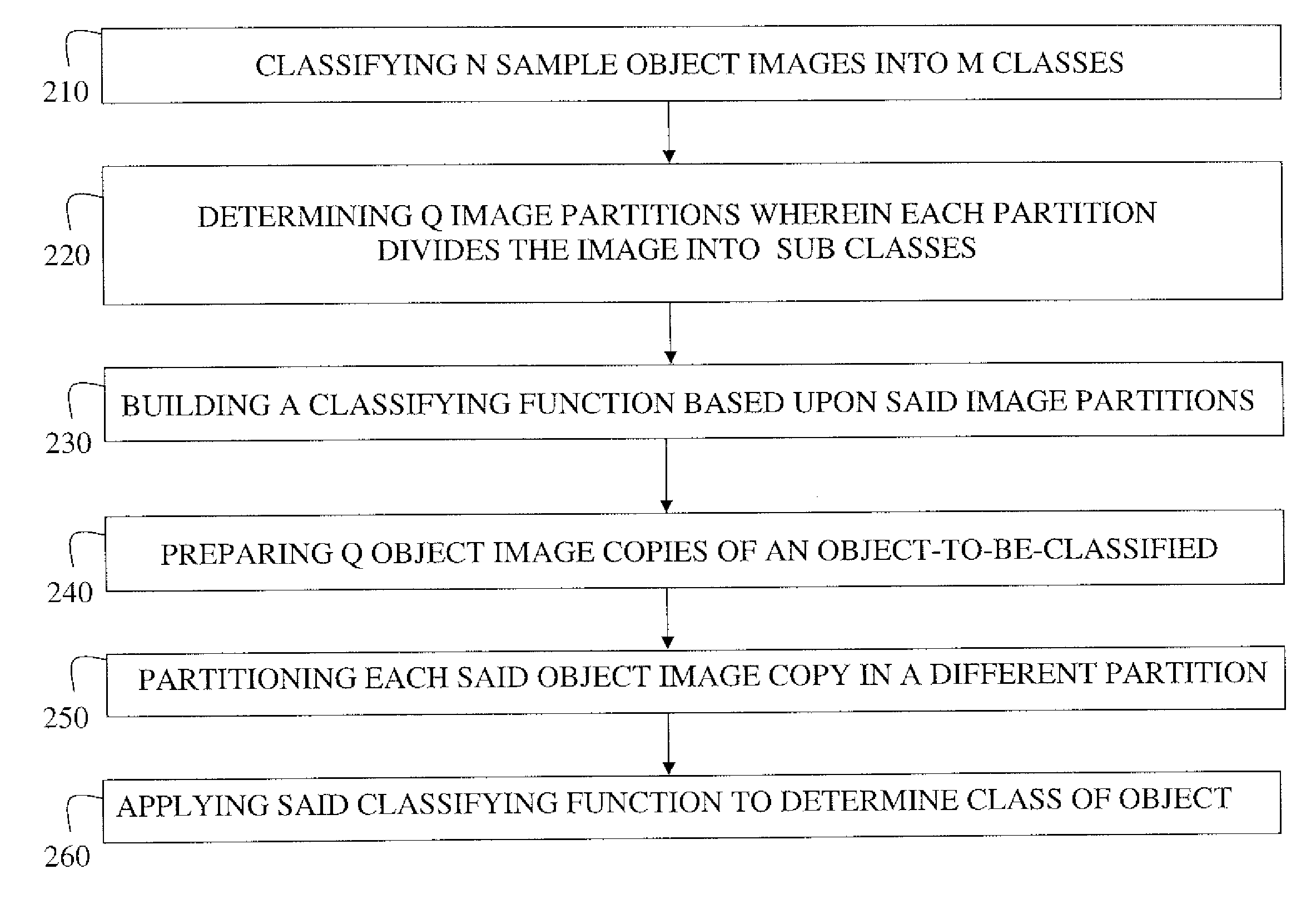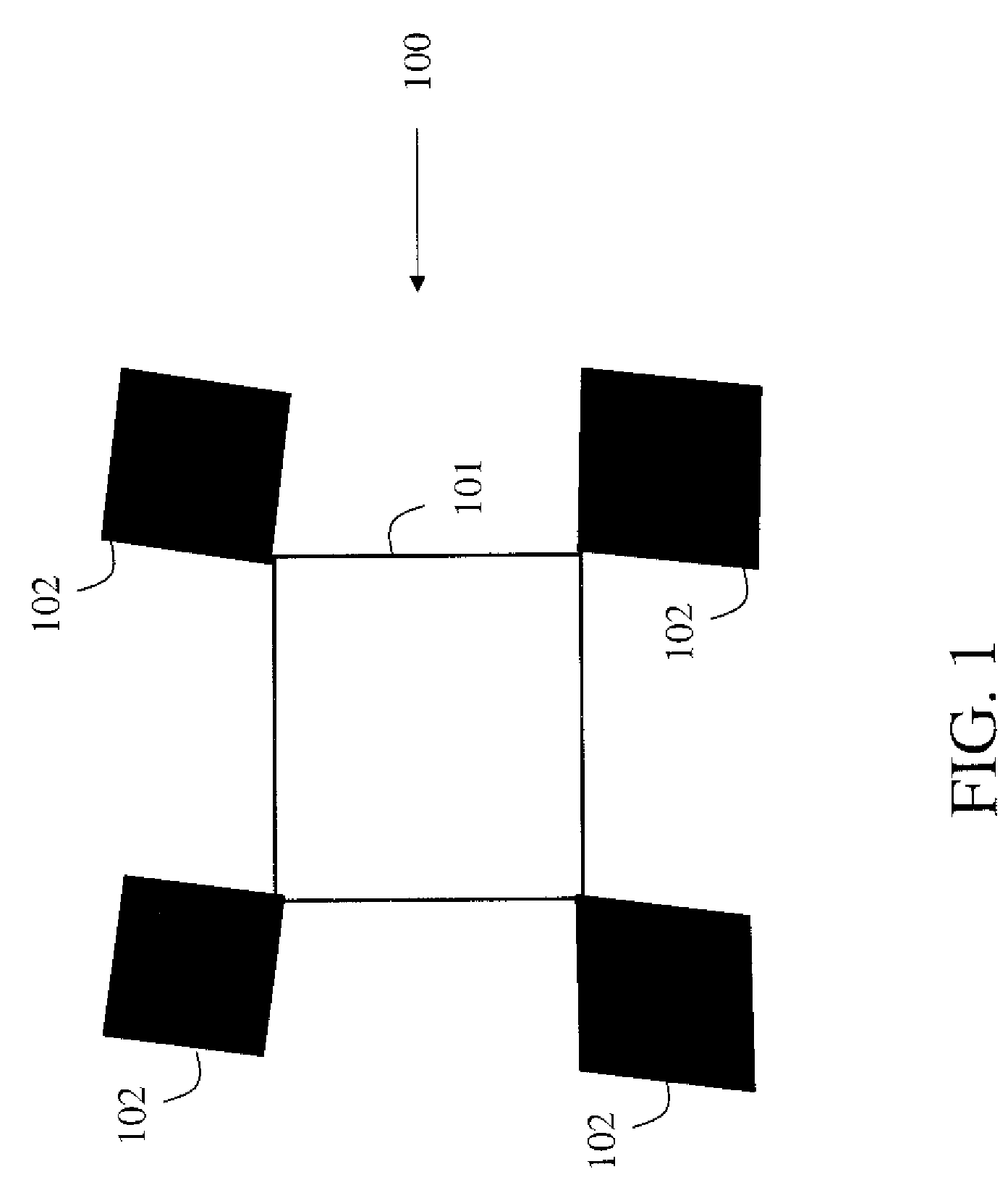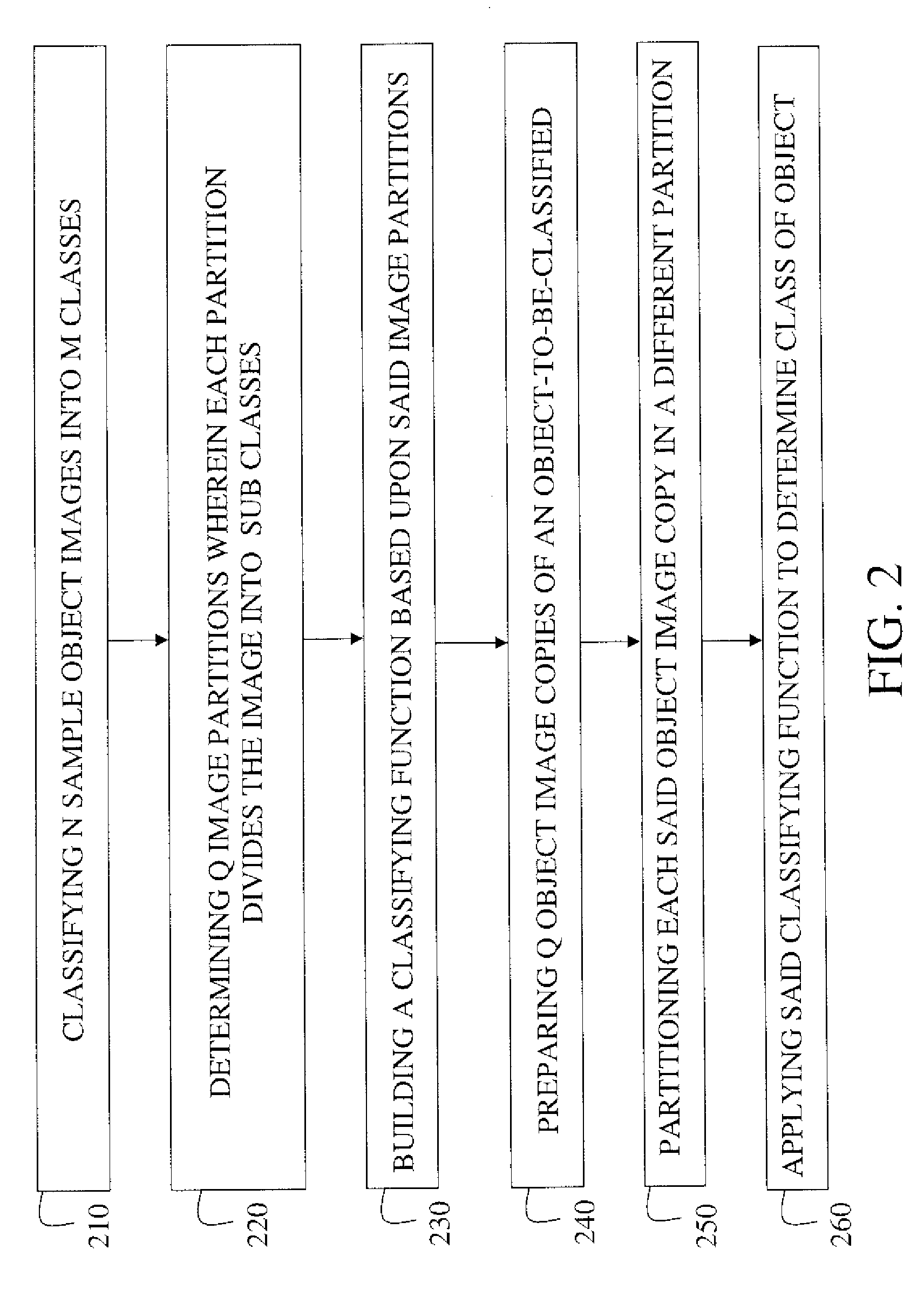Classifying objects using partitions and machine vision techniques
- Summary
- Abstract
- Description
- Claims
- Application Information
AI Technical Summary
Problems solved by technology
Method used
Image
Examples
Embodiment Construction
[0017]In the following description, some terminology is used in general to describe certain features of the present invention as follows:
[0018]“Object to-be-classified” is the subject of the classification process according to the present invention.
[0019]“Object classes” or “object class images” are the predefined classes of objects according to which the classification is performed. Usually these are object images that have been chosen in advance, with many images, hundreds or thousands representing a different object class.
[0020]The method according to the present invention replaces the above-mentioned classic two-steps machine vision classifying methods. As mentioned above, according to the two steps method, classification process has two consecutive segmentations. The first segmentation is done by binarization of the object from its background and second segmentation of the object into sub objects. The disclosed method replaces the second segmentation with a multiple partitions-...
PUM
 Login to View More
Login to View More Abstract
Description
Claims
Application Information
 Login to View More
Login to View More - R&D Engineer
- R&D Manager
- IP Professional
- Industry Leading Data Capabilities
- Powerful AI technology
- Patent DNA Extraction
Browse by: Latest US Patents, China's latest patents, Technical Efficacy Thesaurus, Application Domain, Technology Topic, Popular Technical Reports.
© 2024 PatSnap. All rights reserved.Legal|Privacy policy|Modern Slavery Act Transparency Statement|Sitemap|About US| Contact US: help@patsnap.com










